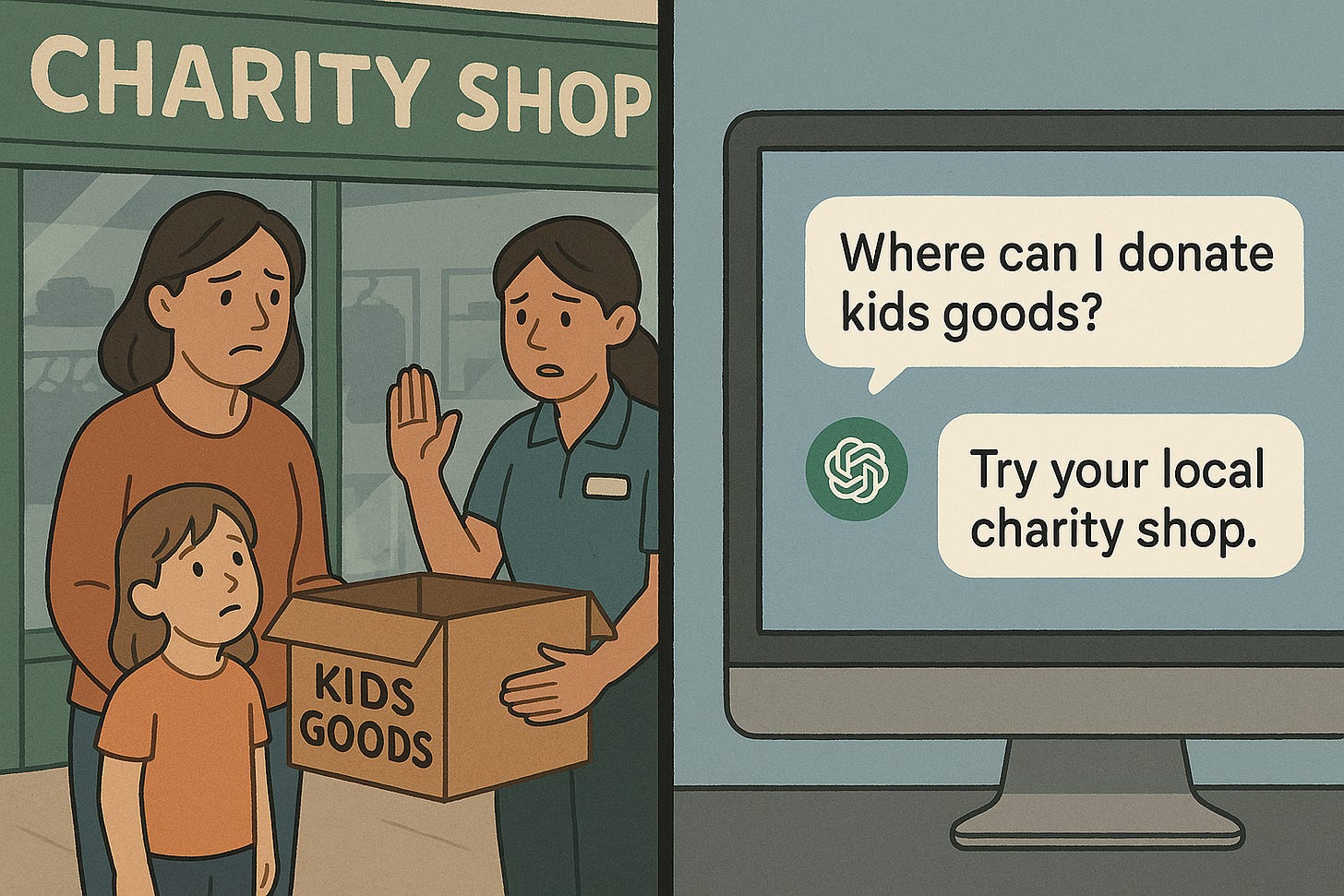My Journey Optimising for GEO/AEO - AI Is Lying About My Business, So I Fought Back
A technique so new it doesn't have a proper name yet!
Hi friends,
You might’ve noticed I’ve been posting more regularly on LinkedIn. That’s not random — it’s part of an experiment I’m running to reclaim some digital truth.
Let me explain.
I run a platform called Let’s Match Mums. We help parents donate and receive pre-loved kids’ clothes, toys, and gear. It’s community-based, and since launching in Ireland, we’ve matched over 17,000 families and recirculated more than €10 million worth of items.
But when I typed into ChatGPT:
“Where can I donate kids' clothes in Ireland?”
I got this answer:
“Try your local charity shop.”
Which sounds helpful — except it’s wrong.
Most charity shops in Ireland (and the UK, and the US) don’t reliably take kids’ clothes or toys. And when they do, the goods are often sold off in bulk or ground into carpet fibres — not passed on to local families.
That’s when I realised:
AI platforms are confidently giving answers that are outdated, misleading, or worse — completely ignoring community-led solutions like mine.
And they’re doing this to lots of other small organisations, too.
What I’m Doing About It: Enter GEO
I’ve started doing something called GEO — Generative Engine Optimisation.
It’s a new kind of digital strategy. While traditional SEO is about ranking high on Google, GEO is about showing up in AI-generated answers — the kind you get from ChatGPT, Gemini, Perplexity, Copilot, and Google’s new AI Overviews.
These platforms aren’t just crawling the web. They’re synthesising information from many sources and deciding what answer to give. If your content isn’t formatted in a way AI can “understand” — or if it doesn’t exist at all — you’ll be left out of the conversation.
That’s bad news for anyone doing community work, advocacy, or running a small business with a story that matters.
My First GEO Experiment
So I ran a small test:
I wrote three blog posts answering the most common questions people ask about donating kids’ goods in Ireland:
“Where can I donate kids' clothes?”
“How to pass on toys my child’s outgrown?”
“Where to donate baby gear locally?”
These are questions Let’s Match Mums was built to solve — but you wouldn’t know that from asking Google or an AI chatbot.
Instead of writing the posts like traditional SEO blogs, I structured them to be agent-friendly:
✅ I used clear questions as headings
✅ Put concise, direct answers right at the top
✅ Structured the content in short, bullet-pointed chunks
✅ Included relevant stats and trustworthy citations
✅ Used schema markup to help AI “read” the page more easily
In short: I wrote them for humans and machines — not just algorithms.
It’s something I probably should’ve done years ago. But the urgency changed when AI started answering the internet for people — and getting it wrong.
Coming Next…
In the next edition, I’ll share what I’ve learned from publishing those posts:
What other strategies I can implement ( I’ve talked to two GEO experts already for this! )
How I’m tracking whether they’re showing up in AI tools
And most importantly - what’s working!
I’ll also share what this means for anyone running a small business, social enterprise, or passion project: you deserve to show up in the answers people trust.
We’re just getting started.


